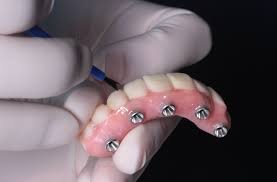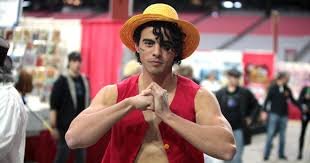
Human Hair Braiding Hair
Human hair braiding hair has become a significant trend in the world of hairstyling, offering endless possibilities for creativity, versatility, and personal expression. Whether you are looking to add volume, length, or intricate designs to your hair, braiding hair made from human hair is often the preferred choice due to its natural appearance and durability. This article will explore what human hair braiding hair is, its types, benefits, maintenance tips, and how it has influenced cultural and fashion trends worldwide.
What is Human Hair Braiding Hair?
Human hair braiding hair refers to hair extensions made from real human hair that are specifically designed for braiding purposes. Unlike synthetic braiding hair, human hair braiding extensions provide a more natural look and feel, allowing for a seamless blend with your natural hair. These extensions come in various textures, lengths, and colors, matching the diverse hair types around the world. People use human hair braiding extensions to create different braiding styles such as box braids, cornrows, twists, and Senegalese twists.
Types of Human Hair Braiding Hair
There are several types of human hair braiding hair available in the market. The most popular types include virgin hair, Remy hair, and non-Remy hair. Virgin hair is hair that has never been chemically treated, dyed, or processed, ensuring the highest quality and longevity. Remy hair, on the other hand, is collected with the cuticles intact and aligned in one direction to prevent tangling and matting, but it may have undergone some treatment or processing. Non-Remy hair is generally cheaper and may have cuticles stripped or damaged, which can cause tangling over time.
Human hair braiding hair is also categorized based on its texture, such as straight, wavy, curly, or kinky. This categorization helps individuals match the extensions with their natural hair texture for a flawless look. Additionally, braiding hair can come pre-stretched or pre-dreaded to facilitate specific styles like faux locs or micro braids.
How to Choose the Right Human Hair Braiding Hair
Selecting the right braiding hair depends on several factors including your hair type, desired style, budget, and the quality of the extensions. It is crucial to choose hair that closely matches your natural hair texture to achieve a cohesive look. For instance, if you have naturally curly hair, opting for kinky or curly braiding hair will give the most natural result.
Pay attention to the hair’s origin and quality certifications. Virgin or Remy hair from reputable sources tends to be more durable and easier to maintain. Additionally, consider the length and thickness based on the style you want to create. Longer braids require longer extensions, but shorter hair can be more manageable and less heavy.
Your budget also plays a role. While human hair braiding hair is more expensive than synthetic hair, the long-term benefits and realistic appearance often justify the cost. It is wise to invest in good-quality hair to avoid frequent replacements and damage.
Popular Braiding Styles Using Human Hair Braiding Hair
Human hair braiding hair is used to create a variety of braiding styles that cater to different aesthetics and cultural backgrounds. Box braids are one of the most popular styles, characterized by small square-shaped hair divisions braided from the roots to the ends. This style is protective, stylish, and easy to maintain, making it a favorite among many.
Cornrows are another traditional braiding style, where the hair is braided closely to the scalp in straight lines or intricate patterns. They are both functional and fashionable, often serving as a canvas for creative designs.
Senegalese twists and Marley twists are also widely favored. These involve twisting the hair extensions around the natural hair to create rope-like strands that are full and textured. These styles provide a sophisticated and elegant look while protecting the natural hair.
Faux locs are a trendy style created by wrapping braiding hair around sections of natural hair, mimicking the appearance of dreadlocks. Using human hair braiding hair for faux locs ensures a more natural and soft finish compared to synthetic alternatives.
Maintenance and Care for Human Hair Braiding Hair
Proper maintenance of human hair braiding hair is essential to keep it looking fresh and extend its lifespan. Washing the braids regularly with a mild sulfate-free shampoo and conditioner helps keep the scalp clean and the hair soft. It is recommended to dilute shampoo before applying to prevent the braids from unraveling.
Moisturizing is crucial since braiding hair can become dry. Using light oils or leave-in conditioners helps maintain hydration without weighing down the hair. Avoid heavy products that cause buildup or grease.
Sleeping with a satin or silk scarf or bonnet protects the braids from friction and reduces frizz. Additionally, gentle handling when styling or washing prevents unnecessary tension on the scalp and breakage of the braids.
Refraining from over-styling with heat and limiting exposure to harsh chemicals will also prolong the life of the braiding hair. When the braids start to loosen or show signs of wear, it is best to take them down carefully and give your natural hair a break before installing new braids.
Cultural Significance of Human Hair Braiding
Braiding hair holds deep cultural importance in many communities around the world. Historically, braids have served as a form of social expression, indicating aspects like age, marital status, tribe, and religion. In African cultures, braiding has been a tradition passed down through generations, symbolizing identity and community ties.
In contemporary society, braids are celebrated as a form of cultural pride and heritage. They have also become a powerful statement in the fashion world, embracing natural beauty and diversity. The global popularity of braiding hair reflects a growing appreciation of cultural artistry and an acknowledgment of the history behind these intricate hairstyles.
Economic Impact and Industry Trends
The human hair braiding hair industry has seen significant growth due to increasing demand for natural-looking hair extensions. It supports numerous businesses from hair collectors and suppliers to stylists and retailers. Many entrepreneurs have turned hair braiding into a lucrative business, offering custom extensions, styling services, and educational workshops.
Current trends in the industry emphasize sustainable and ethically sourced hair. Consumers are becoming more aware of the origins of their hair extensions and seek products that promote fair trade and cruelty-free practices. This shift encourages transparency and responsible sourcing, ensuring the welfare of hair donors and workers in the supply chain.
Technology and innovation also influence the industry, with advancements in hair processing techniques that maintain hair quality and introduce new textures and styles. Social media platforms have played a pivotal role in popularizing braiding styles, making tutorials and inspiration accessible to a global audience.
Conclusion
Human hair braiding hair is much more than just a beauty accessory; it is a medium of cultural expression, creativity, and personal identity. Its natural appearance, versatility, and protective benefits make it a preferred choice for many who seek to enhance their hairstyles. Understanding the different types, proper maintenance, and cultural background enriches the experience of using human hair braiding hair. As the industry evolves with a focus on ethical sourcing and innovation, the future of braiding hair remains bright and promising for individuals around the world.






